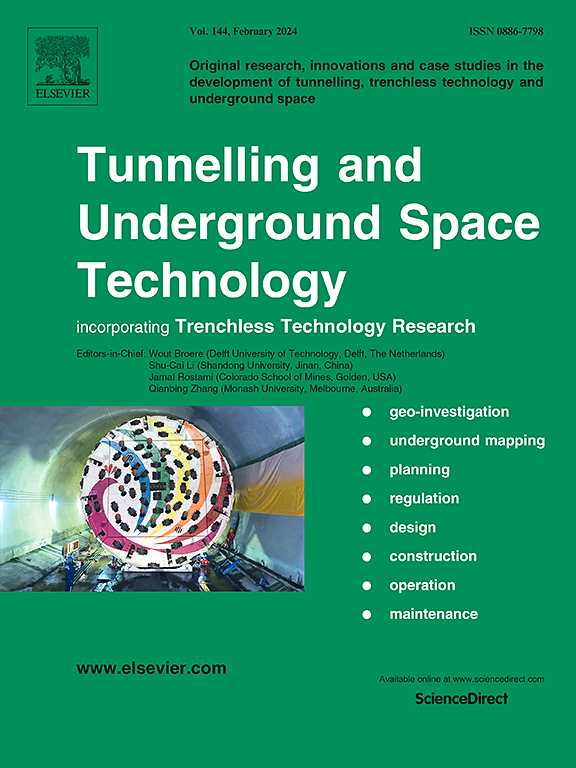Replicating the sequential excavation method in tunnel model tests
IF 6.7
1区 工程技术
Q1 CONSTRUCTION & BUILDING TECHNOLOGY
引用次数: 0
Abstract
To investigate soil deformation and stress distribution during tunnel excavation, a series of model tests were conducted at varying buried depths. These tests replicated the three-bench excavation method employed in the Luochuan Tunnel, utilizing prefabricated initial support segments connected by 3D-printed sliding connectors to achieve rapid sequential excavations and support installations. The results indicated that: (1) Increased buried depth enhances soil stability before excavation and reduces both the duration and magnitude of tunneling-induced disturbances. (2) A longitudinal soil arch forms in advance of the excavation face and weakens as the excavation face approaches the monitored cross-section. During excavation, the soil above the tunnel’s maximum width line exhibits a strong stress unloading effect, while the lower soil experiences significant loading. Consequently, the soil pressure in different directions takes on a bottle shape before excavation and transitions to a butterfly shape during and after excavation. (3) As buried depth increases, the triangular core soil arch transforms into an M-shape, accompanied by an increase in both the height of the core soil arch and the extent of the loosened zone. (4) For a given tunnel width, the distance of surface cracks from the centerline increases with buried depth, suggesting the presence of inclined failure planes rather than vertical failure planes above the tunnel, as proposed by Terzaghi.
求助全文
约1分钟内获得全文
求助全文
来源期刊

Tunnelling and Underground Space Technology
工程技术-工程:土木
CiteScore
11.90
自引率
18.80%
发文量
454
审稿时长
10.8 months
期刊介绍:
Tunnelling and Underground Space Technology is an international journal which publishes authoritative articles encompassing the development of innovative uses of underground space and the results of high quality research into improved, more cost-effective techniques for the planning, geo-investigation, design, construction, operation and maintenance of underground and earth-sheltered structures. The journal provides an effective vehicle for the improved worldwide exchange of information on developments in underground technology - and the experience gained from its use - and is strongly committed to publishing papers on the interdisciplinary aspects of creating, planning, and regulating underground space.
 求助内容:
求助内容: 应助结果提醒方式:
应助结果提醒方式:


